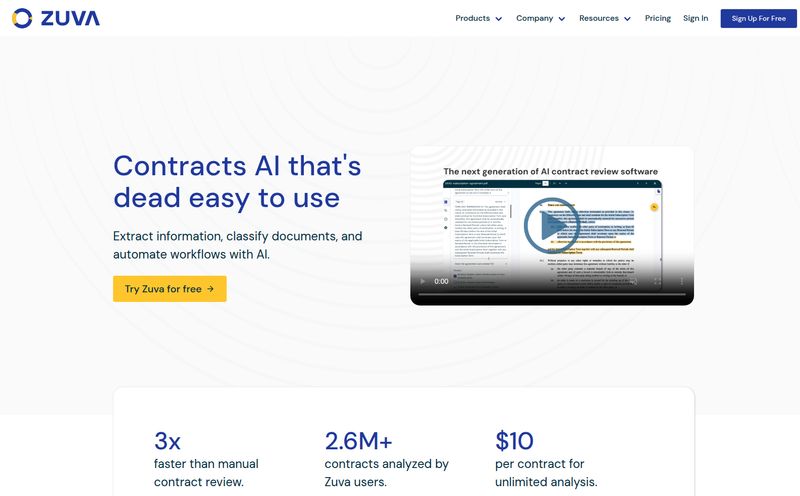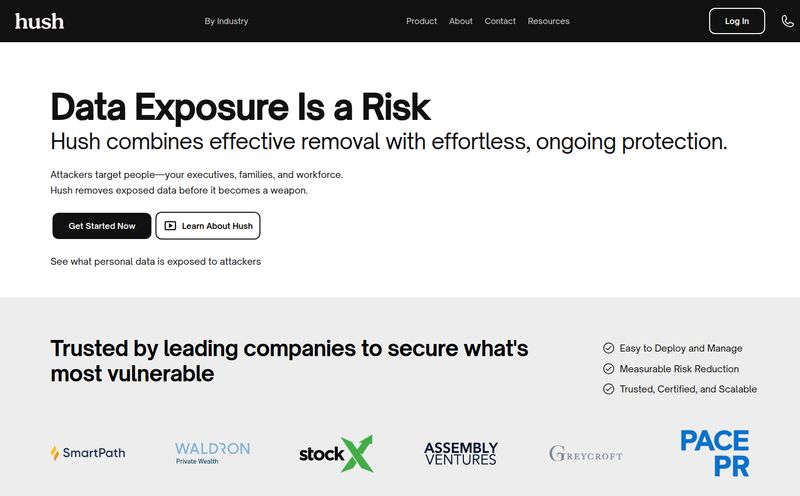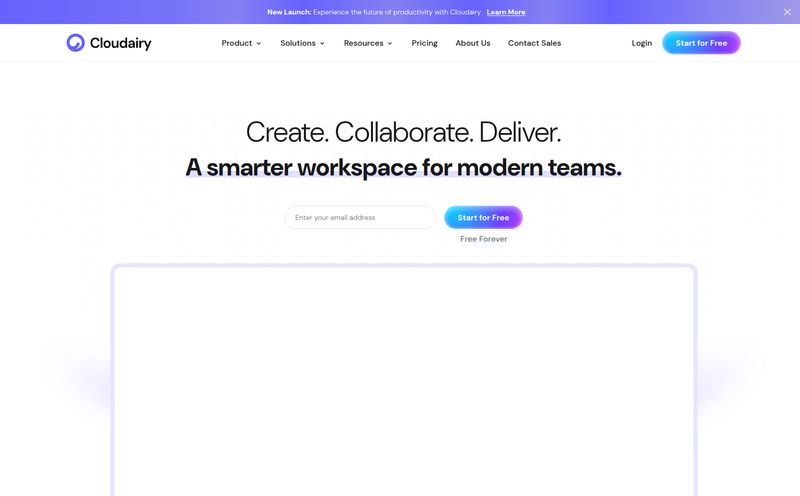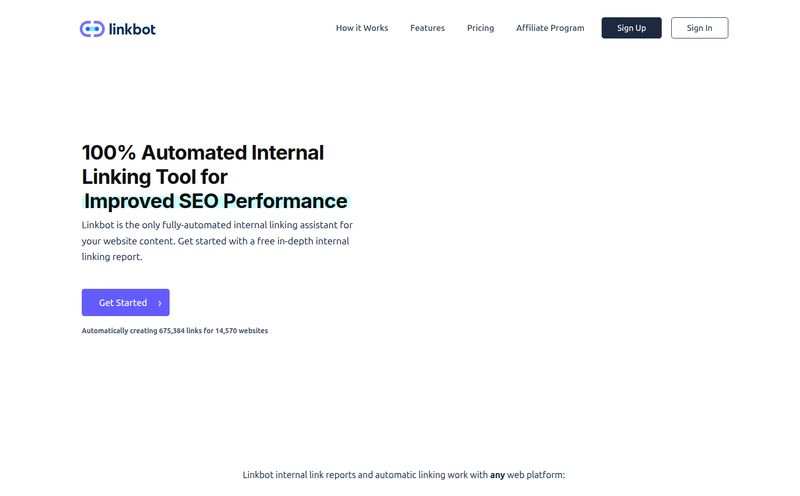If you've ever been in the trenches of product development or UX research, you know the grind. The endless hours spent scheduling user interviews, the awkward silences on Zoom calls, and then… the transcription. Oh, the transcription. It’s a special kind of purgatory, sifting through hours of conversation for that one golden nugget of feedback.
For years, we've been told this is the only way to get real qualitative insights. Surveys are too shallow, and analytics only tell you the 'what,' not the 'why'. So we kept doing it, fueled by coffee and the hope of a breakthrough. But what if there was another way? I've been hearing whispers about AI tools stepping into this space, and honestly, I've been skeptical. Most of them feel like glorified chatbots. But then I stumbled upon Skylight, and I've gotta say, my curiosity is piqued.
So What Exactly is Skylight?
At first glance, Skylight looks like an AI user interview platform. And it is. But it’s a bit more than that. The core idea, as I see it, is to blend the depth of a one-on-one conversation with the scale of a massive survey. It uses AI to conduct natural, flowing voice conversations with your users. No clunky scripts, no robotic responses. It claims the AI can adapt, ask intelligent follow-up questions, and even pick up on subtle cues like hesitation in a user's voice.
But here’s where it gets really interesting. It’s not just for user interviews. The tech also extends to automating Windows-based workflows and QA testing. Think of it as a platform built to understand and interact with software just like a human would—whether that’s talking about the software in an interview or clicking through it to find bugs. It's a pretty ambitious scope.
The Magic of an AI-Powered Conversation
The main draw on their website is the AI interview feature, and it’s easy to see why. The promise is intoxicating: get deep user insights without lifting a finger. Here's how it seems to break down.
Conversations That Don’t Feel... Well, Awful
We've all been on the receiving end of a terrible automated call. "Please say 'yes' or 'no'." It's a miserable experience. Skylight aims to be the polar opposite. It’s designed to actually listen. By feeding it some basic information about your product and your research goals, the AI can conduct an entire interview. It picks up on things users say and asks relevant follow-ups, digging deeper in a way that a pre-written survey never could. This is the difference between data collection and genuine discovery.
From Raw Chat to Actionable Insights, Instantly
Here's the part that made my inner project manager do a little happy dance. The analysis is real-time. As the interviews are happening, Skylight is already sorting the feedback. It identifies themes, spots patterns, and organizes everything for you. Imagine finishing a batch of 50 interviews and having a report ready on the biggest pain points or most-requested features. No more spreadsheets. No more sticky notes all over your monitor. Just clean, organized insights you can act on. That’s not just a time-saver; it changes the pace at which you can iterate.
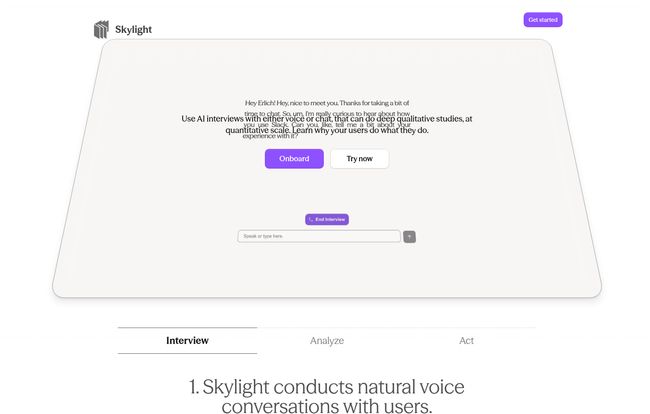
Visit Skylight
Beyond Interviews: The QA Automation Angle
Okay, so the AI interviews are cool. But remember I mentioned the QA testing part? This might be the unsung hero of the platform. Skylight hosts virtual Windows machines and deploys AI agents to operate them just like a person would. This means you can automate testing for desktop applications—even ancient legacy software that has no API to hook into. The AI just looks at the screen and clicks things.
You can build these tests using plain English or, and this is pretty wild, by simply recording a video of you performing the actions. The AI watches the video and creates a resilient, repeatable test from it. For any team still bogged down by manual regression testing, this could be a massive win. You catch bugs before they ever reach your customers and free up your QA team to focus on more complex, exploratory testing. It's a smart way to build confidence before you ship a new feature.
Alright, How Much Does This Magic Cost?
This is always the big question, isn't it? A tool can promise the world, but if it costs a fortune, it's a non-starter for most of us. I was pleasantly surprised by Skylight's pricing structure. It feels... sane.
| Plan | Price | Key Features |
|---|---|---|
| Free | $0 /month | 10 test steps, test recordings, AI steps, community support. Great for a test drive. |
| Pro | $40 /month | Everything in Free plus 1000 test steps, priority support, and saved authentication states. |
| Enterprise | Custom | Everything in Pro plus on-prem deployment and API access. |
The Free plan is genuinely useful for dipping your toes in. The Pro plan at $40 a month is, frankly, a bargain. When you consider that a single hour of a freelance UX researcher's time can be two, three, or even four times that, the value proposition is incredibly strong. The Enterprise plan has that classic "call us for a price" model, which is standard for big companies needing custom setups and security assurances.
The Good, The Bad, and The AI
No tool is perfect. After digging through the site and thinking about how I'd use it, here's my honest breakdown.
The upside is obvious. It saves a monumental amount of time on the manual, repetitive tasks of both user research and QA testing. The idea that tests are resilient to minor code changes is a huge deal for anyone who's ever had their entire test suite break after a developer changed a CSS class name. And the ability to create tests from video recordings... it feels like something from the future.
On the other hand, the custom pricing for the Enterprise plan is a minor frustration. Sometimes you just want to see the number, you know? And I'd assume some of the more advanced, whiz-bang features are probably reserved for the higher-tier plans, which is a common business model. The biggest hurdle, though, might be a mental one: trusting an AI to have a meaningful conversation. Some product managers might be hesitant to give up that direct human connection, even if the AI is fantastic. A small price to pay for the potential efficiency gains, I'd say.
A Few Lingering Questions
I know what you might be thinking, so I've put together a few common questions that popped into my head.
How is this really different from just doing interviews myself?
Scale and speed. You can do one interview. Skylight can do a hundred in the same amount of time and have the analysis done instantly. It's not about replacing you, it's about giving you superpowers to gather more data, faster, so you can focus on strategy.
Can the AI truly understand user intent and emotion?
Based on their claims, it's more advanced than a simple script. It's designed to understand context and even analyze tone and hesitation. While it might not capture every single human nuance, it's a massive leap beyond traditional surveys and could probably give a few human interviewers a run for their money.
Is it difficult to set up?
The emphasis on "plain English" and creating tests from video recordings suggests the goal is a low-code, user-friendly experience. It seems to be built for product teams, not just developers, so the barrier to entry should be relatively low.
Who is the perfect user for Skylight?
I see this being a dream for Product Managers, UX Researchers, and QA Engineers in small-to-mid-sized tech companies. Anyone who needs to move fast, validate ideas quickly, and doesn't have a massive team to throw at manual tasks would benefit immensely.
Can it actually handle my company's clunky old desktop app?
Yes! That's one of the most compelling aspects. Because it works visually on a virtual Windows machine, it doesn't need a modern app with clean APIs. It can interact with almost anything you can put on a Windows desktop.
My Final Verdict on Skylight
So, is Skylight the future? It’s too early to call it a complete revolution, but it’s definitely a powerful sign of where things are headed. This isn't just another automation tool. It's an intelligent platform that tackles two of the most time-consuming and critical parts of software development: understanding your users and ensuring your product works.
For me, the most exciting part is how it bridges the gap between qualitative depth and quantitative scale. It allows teams to stop choosing between talking to five users or surveying five thousand. With a tool like this, you can do both. And for any team trying to build better products faster, that’s not just an advantage—it’s a whole new way of working.
Reference and Sources
- Skylight Official Website
- Skylight Pricing Information
- Nielsen Norman Group - When to Use Which User-Experience Research Methods (For context on qualitative research)
